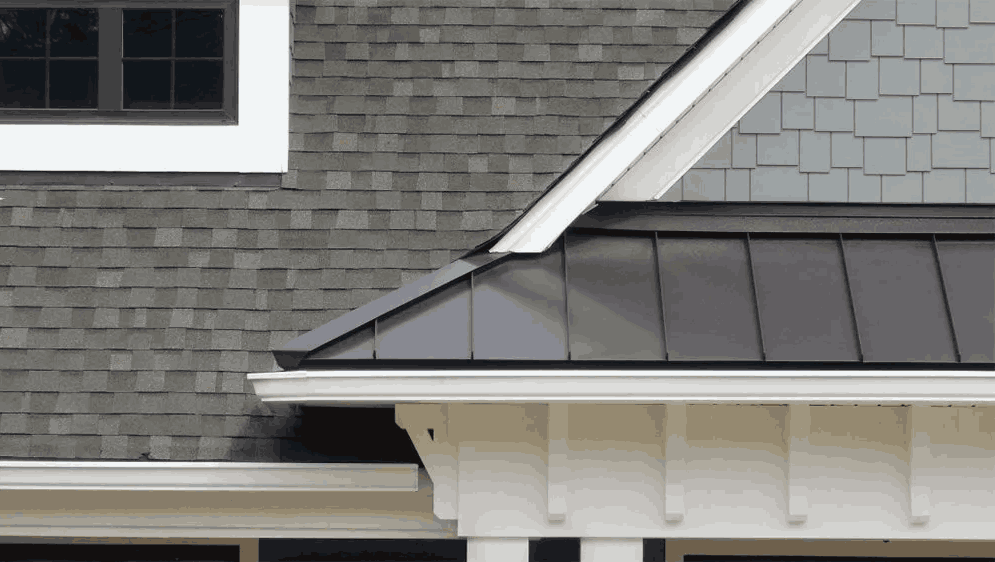
Your roof is a crucial part of your home, offering long-term protection from harsh weather and contributing to a safe and comfortable living space for you and your loved ones. However, like any major feature of your house, your roof needs consistent upkeep to function at its peak.
This guide outlines essential tasks and a comprehensive checklist for regular roof maintenance. By dedicating time to these annual and seasonal tasks, you can extend the life of your roof and prevent costly repairs. Many of these maintenance steps are simple, yet they offer significant benefits to ensure your roof stays strong and reliable for years to come.
Why Regular Roof Maintenance Matters
Regular roof maintenance is a proactive approach to avoiding serious problems. By inspecting and caring for your roof regularly, you can identify minor issues before they develop into larger, more expensive problems. Maintenance also ensures that your home remains energy-efficient and comfortable throughout the year.
Key benefits of regular roof maintenance include:
- Prolonged lifespan of your roof
- Early detection and prevention of leaks
- Reduced long-term repair costs
- Enhanced energy efficiency
- Increased home value
Key Steps in Regular Roof Maintenance
Routine roof maintenance involves a combination of inspections, cleaning, and repairs. Here’s a step-by-step guide to help homeowners effectively maintain their roofs.
Routine Roof Inspections
Inspecting your roof twice a year, ideally in the spring and fall, helps you identify issues caused by harsh weather conditions or wear and tear. During your inspection, focus on the following:
- Shingles: Look for cracked, curled, or missing shingles.
- Flashing: Ensure the metal flashing around chimneys, vents, and skylights is intact and securely fastened.
- Gutters: Check for clogs and debris buildup that could hinder proper water drainage.
- Roof Surface: Watch for signs of sagging or soft spots, which can indicate underlying structural damage.
- Moss and Algae: These can deteriorate roofing materials over time. Clear away any visible growth to prevent moisture retention.
Minimize Roof Traffic
Avoid excessive walking on your roof to prevent damaging the granules that protect shingles. Foot traffic can scuff off granules or catch the edges of shingles, potentially lifting or cracking them. Limit roof access as much as possible. For a safer, non-invasive approach, Roofer.com offers free drone inspections whenever you need, ensuring your roof stays protected without anyone walking on it.
Cleaning Debris and Maintaining Gutters
Leaves, branches, and other debris can accumulate on your roof and in your gutters, leading to water pooling and potential damage. Keeping these areas clean ensures rainwater flows smoothly and doesn’t seep into vulnerable parts of your home.
- Clear gutters and downspouts of debris to prevent clogs.
- Remove leaves, branches, and other debris from the roof surface.
- Trim overhanging branches that can scrape or fall onto your roof, causing damage.
- Use gentle tools like a broom or a leaf blower to avoid dislodging protective granules on shingles.
Repairing Minor Damages
Small issues can escalate quickly if not addressed. Repairing minor damages promptly helps avoid costly repairs later.
- Replace any cracked or missing shingles to prevent leaks.
- Re-seal or repair damaged flashing around chimneys and vents.
- Patch small holes or weak spots on the roof surface before they expand.
Applying Roof Coatings and Treatments
Roof coatings can extend the lifespan of your roof and add an extra layer of protection against water, UV rays, and extreme weather. Depending on your roof type, consider using:
- Silicone coatings for enhanced waterproofing
- Acrylic coatings for affordability and UV protection
- Bitumen-based coatings for added durability on flat or low-slope roofs
- Waterproofing coatings to seal and protect against water damage
Seasonal Maintenance and Special Care
Perform additional maintenance tasks seasonally to ensure your roof remains in optimal condition.
Fall Maintenance:
- Ensure gutters are clean and securely attached, especially at right angles where water flow can accumulate.
- Prepare for potential ice dams by ensuring proper attic ventilation and insulation. Ice dams can form when snow melts on the roof and refreezes at the eaves, leading to pooling water that can damage shingles and seep into the roof deck.
Winter Safety and Ice Dam Prevention:
- Check that attic ventilation is balanced and free of blockages, as this helps regulate roof temperature and prevent ice dams.
- Make sure warm, humid air from inside your home is vented outside to avoid condensation and mold growth in the attic.
- After snowfall, carefully remove built-up snow to prevent excess weight and ice dam formation.
Spring and Summer Maintenance:
- Inspect your home’s exterior after heavy rain for moisture streaks or areas that remain damp, as these can indicate clogged gutters or soffit problems.
- Ensure downspouts are properly directed to avoid discharging water onto the roof, which can lead to granule loss and premature wear.
- Confirm that window and wall claddings are watertight and that caulking is intact to prevent water infiltration.
- Take protective measures against our Texas summer heat
Roof Check-Ups and Additional Tips
Your roof may have been a perfect defense against the elements when it was new, but weathering and natural aging can affect its condition over time.
Inspect Flashing:
- Flashing in roof valleys and around roof penetrations can deteriorate. Look for signs of rust, missing fasteners, or deteriorating sealant. If these problems are present, contact a contractor for repair.
Examine Soil Stacks and Roof Penetrations:
- Rubber gaskets around vent pipes can dry out and crack, creating openings for water infiltration. Inspect these areas periodically to ensure they remain sealed.
Roof Maintenance Checklist for Homeowners
Use this checklist during your routine inspections to ensure all essential aspects of your roof are evaluated:
- Shingles:
- Inspect for cracks, curling, or missing pieces.
- Check for granule loss.
- Flashing:
- Ensure all metal flashing is intact and secure.
- Look for gaps or cracks where flashing meets the roof surface.
- Gutters:
- Clear out debris and ensure downspouts direct water away from the foundation.
- Check for any sagging or leaks in the gutter system.
- Roof Surface:
- Look for signs of sagging or soft spots.
- Assess any areas for moss or algae growth.
- Ventilation:
- Ensure all vents are unobstructed.
- Verify there are no signs of leaks or rust around vent openings.
- Moss and Algae:
- Remove any visible growth using a specialized roof cleaner.
- Chimneys and Skylights:
- Check for secure flashing and ensure there are no gaps or cracks around the edges.
- Seals and Caulking:
- Examine all seals for cracks or deterioration.
- Reapply caulking if necessary.
- Nearby Trees:
- Trim branches to prevent contact with the roof.
- Roof Traffic:
- Limit walking on the roof to minimize wear.
- Winter Preparations:
- Ensure attic insulation and ventilation are sufficient to prevent ice dams.
- Debris Removal:
- Remove debris carefully to avoid dislodging granules.
Why Choose Roofer.com for Regular Roof Maintenance Advice
Roofer.com is trusted by homeowners for a reason. With years of experience in the roofing industry, we provide reliable, comprehensive advice and maintenance services tailored to your unique needs. Here’s why homeowners prefer Roofer.com:
- Expertise and Experience: Our seasoned professionals understand every aspect of roof maintenance, from routine inspections to full replacements.
- Comprehensive Services: We offer everything from consultations to hands-on maintenance and repair work, ensuring your roof receives the attention it needs.
- Personalized Guidance: Our team provides detailed recommendations based on your roof’s specific condition and materials.
- Transparent Communication: At Roofer.com, we make sure homeowners understand every step of the process, with clear, straightforward communication and actionable advice.
Key Takeaways for Maintaining Your Roof
- Regular inspections and cleaning prevent potential issues and extend your roof’s lifespan.
- Address small problems immediately to avoid expensive repairs.
- Use professional inspections for comprehensive checks and peace of mind.
- Ensure proper attic ventilation and insulation to prevent ice dam formation.
- Roofer.com provides trusted advice and expert services to keep your roof in top condition.
Conclusion
Maintaining your roof doesn’t have to be overwhelming. With a structured approach to regular inspections, cleaning, and minor repairs, you can safeguard your home’s value and comfort for years to come. Combining DIY efforts with professional support from Roofer.com ensures your roof remains a sturdy, reliable part of your home. Don’t let neglect turn small issues into big headaches—start your roof maintenance journey today for a safer, more secure home.




